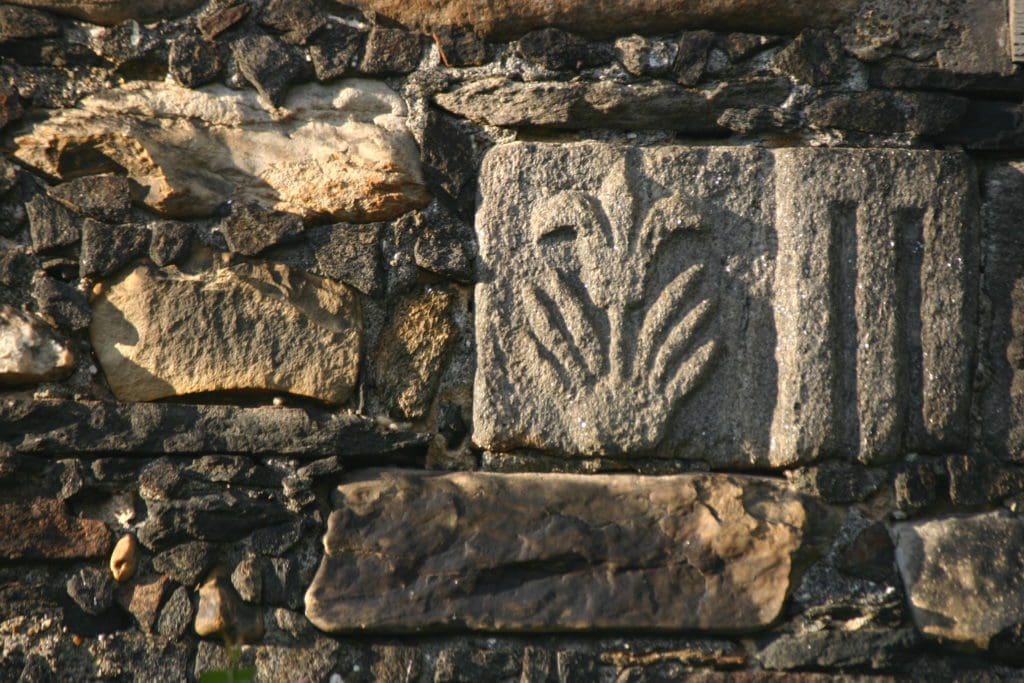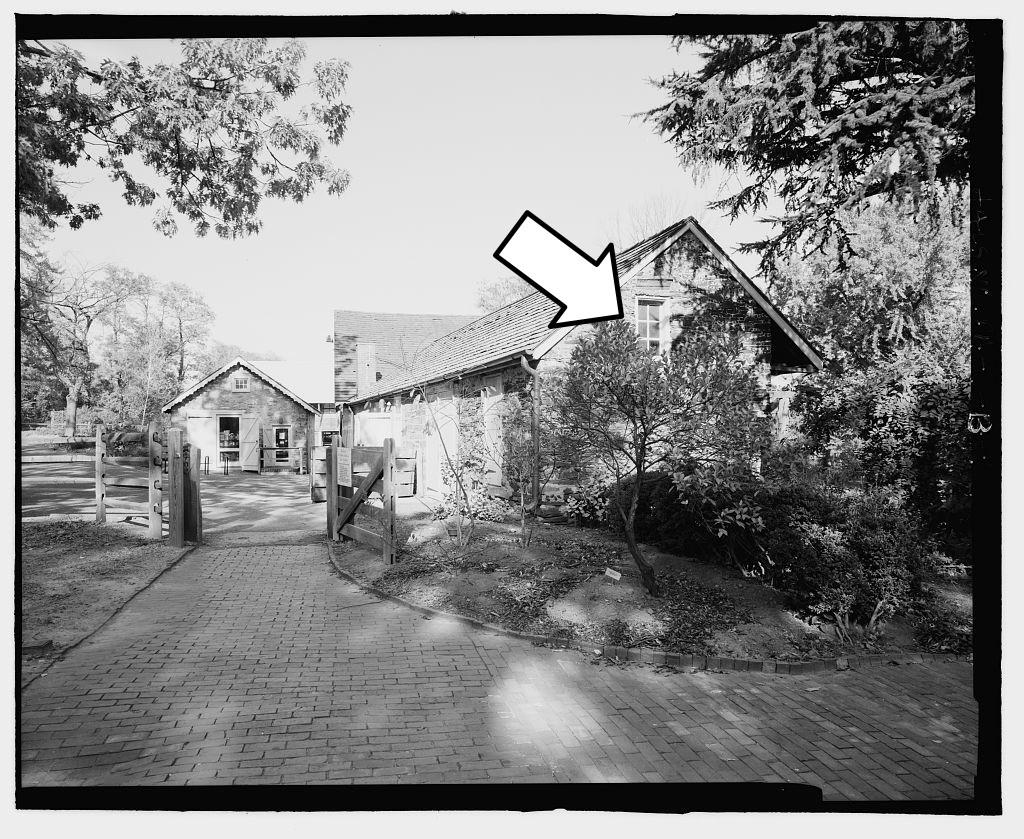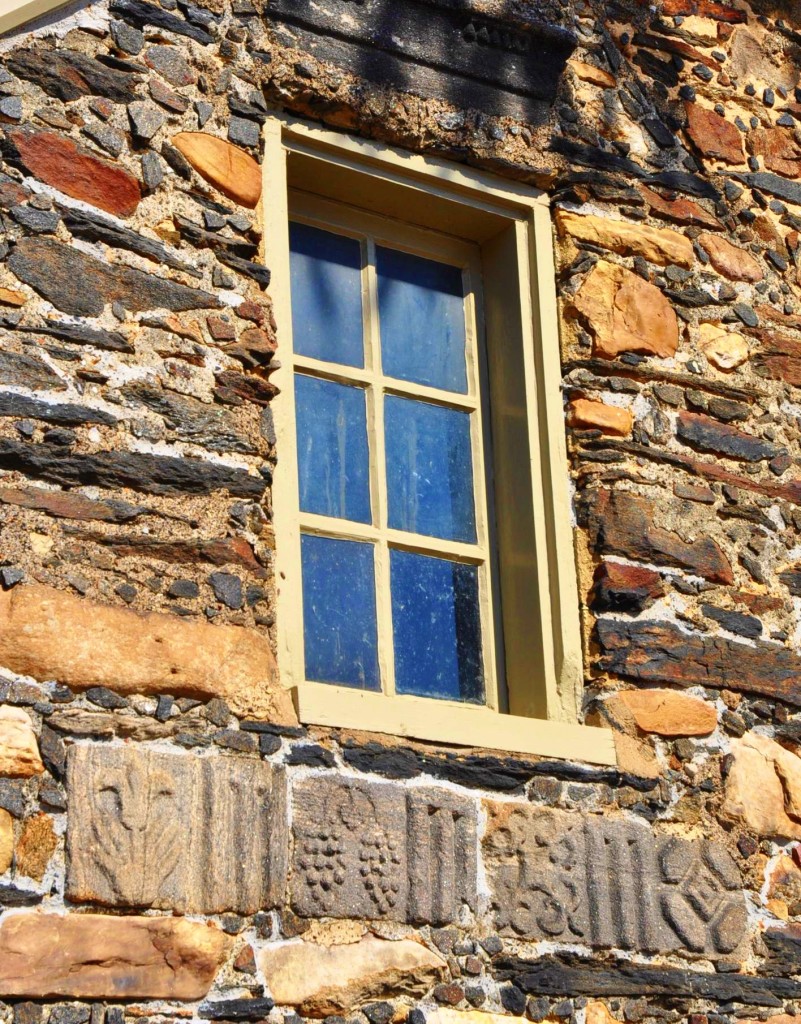John Bartram’s Stone Carvings

Visitors with sharp eyes will find five ornamental “blocks” in several locations around the Garden. These artistic works come from a substantial stone carving by John Bartram. Three of those blocks were inserted in the south wall of the 1760 Greenhouse, probably sometime in the Ann Bartram Carr generation, when that building no longer functioned as a greenhouse. The origin, date, and original use of these carvings remains a bit mysterious—or at least undocumented. We certainly assume John Bartram carved them from the local stone—the Wissahickon schist which forms the bedrock at the Garden and for most of Philadelphia County.
The carvings are on the front of substantial, rectangular blocks of stone and form part of a classical frieze of the Doric order, which typically consist of alternating elements from classical Greek architecture: a series of three-barred “triglyphs”(themselves once symbolic of beam ends that ran over the columns) and alternating with an intervening decorative scenes, or “metopes”—usually made up of classical deities or mythological elements (John Bartram elected to replace these with floral and plant elements). The same sort of decoration is seen in the Parthenon and other well-known pieces of classical architecture.
This form of Doric decoration was very common in colonial Philadelphia. In colonial and English baroque architecture there were frequent examples of mixed order decoration—so in Philadelphia you commonly see Doric frieze carvings over Ionic or other type columns. This is very apparent inside Christ Church and in the central hall of Independence Hall. Extending into the 20th century the Suburban Station interior has very stylized Doric moldings with triglyphs throughout, but probably no one would notice if it wasn’t pointed out.
The John Bartram House has three Ionic columns on its main front. The fragments of Doric frieze we have are not currently in place on the Bartram House, and we don’t know that they were even intended for use there. It is certainly possible, but is also possible that they were carved to decorate another building—likely a small building that is no longer standing. The 6 or 7 stones that survive from this ]frieze suggest the total length was about 12 feet long, suggesting a smaller building than the front of the Bartram House. Sometime around 1830 the remaining carved blocks of the fri eze were inserted into odd corners and places around at Bartram’s Garden. They are currently found under the window of the outbuilding we call the “Seed House.” Another one is upside down in the east side wall of the north shed on the Bartram house, and one block is inserted into the terrace wall east of the Bartram House.
eze were inserted into odd corners and places around at Bartram’s Garden. They are currently found under the window of the outbuilding we call the “Seed House.” Another one is upside down in the east side wall of the north shed on the Bartram house, and one block is inserted into the terrace wall east of the Bartram House.
The Bartram metope carvings are all fairly recognizable plant symbols: rose, pink, tulip, iris, etc. The carvings’ existence demonstrates John Bartram had some knowledge of classical Greek architecture and the construction and style of the traditional orders. There were books in English in his lifetime and available in the Philadelphia Library Company that diagrammed and explained the various orders; it seems very likely Bartram had access to one or more books on classical architecture and took his inspiration from them.



